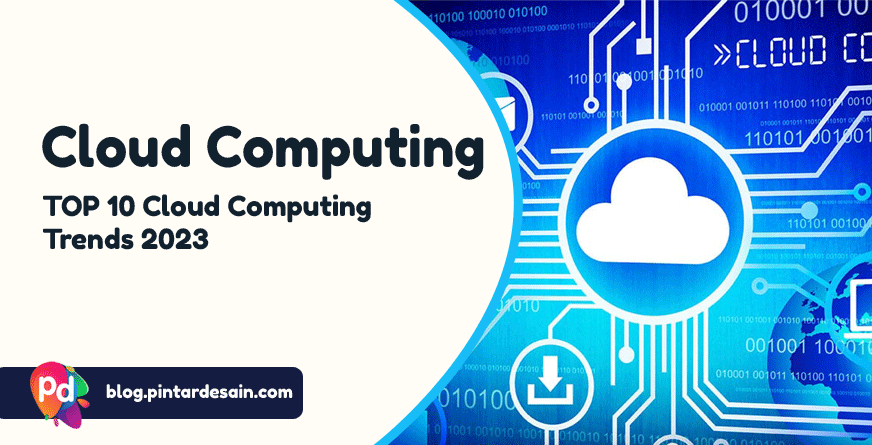Cloud computing has been one of the most transformative technologies of the past decade, providing businesses with the ability to scale rapidly, reduce infrastructure costs, and improve collaboration and productivity. As we head into 2023, cloud computing continues to evolve, with new trends and technologies emerging that will shape the future of the industry. In this article, we will discuss some of the top cloud computing trends to watch in 2023.
Trend Cloud Computing Trends 2023

1. Hybrid Cloud Environments
Hybrid cloud environments, which combine private and public clouds, are becoming increasingly popular. Businesses are realizing that not all workloads are suitable for public clouds, and that some applications require the security and control of a private cloud. Hybrid cloud environments allow organizations to take advantage of the scalability and cost-effectiveness of public clouds, while keeping sensitive data and applications secure.
2. Edge Computing
Edge computing is the process of processing data closer to the source, rather than sending it to a central data center or cloud. This approach is becoming more popular as the Internet of Things (IoT) and other edge devices generate vast amounts of data that require real-time processing. Edge computing allows businesses to process data faster and more efficiently, while reducing latency and improving performance.
3. AI and Machine Learning
Artificial Intelligence (AI) and Machine Learning (ML) are becoming increasingly important in cloud computing. Cloud providers are offering AI and ML services that allow businesses to analyze data more effectively, improve customer experiences, and automate processes. As AI and ML become more accessible and easier to use, businesses of all sizes will be able to take advantage of these technologies to gain a competitive edge.
4. Serverless Computing
Serverless computing, also known as Function-as-a-Service (FaaS), is a new model of cloud computing that allows businesses to run code without worrying about the underlying infrastructure. With serverless computing, businesses can focus on building applications and let the cloud provider manage the infrastructure. This approach can reduce costs and increase scalability, making it an attractive option for businesses of all sizes.
5. Multi-Cloud Management
As businesses increasingly adopt cloud computing, many are finding that they are using multiple cloud providers for different applications and workloads. Multi-cloud management tools allow businesses to manage their cloud resources across multiple providers, making it easier to optimize costs, improve security, and ensure compliance.
6. Cloud Security
As cloud computing becomes more prevalent, security remains a top concern for businesses. Cloud providers are continuously improving their security measures, and businesses are increasingly turning to cloud-based security solutions to protect their data and applications. In 2023, we can expect to see even greater emphasis on cloud security, with businesses investing in advanced security solutions such as identity and access management, encryption, and threat detection.
7. Containerization
Containerization is a popular method of packaging and deploying applications in the cloud. Containers provide a lightweight and portable way to run applications, making it easier to move them between different environments and cloud providers. In 2023, we can expect to see continued growth in containerization, with businesses adopting container platforms such as Kubernetes to manage their containerized applications.
8. Cloud-Native Development
Cloud-native development is an approach to building applications that takes full advantage of cloud computing resources and services. Cloud-native applications are designed to be scalable, resilient, and portable, making them ideal for modern cloud environments. In 2023, we can expect to see more businesses adopting cloud-native development practices, using tools and frameworks such as serverless computing, containers, and microservices to build cloud-native applications.
9. Quantum Computing
Quantum computing is an emerging technology that has the potential to revolutionize cloud computing. Quantum computers use quantum mechanics to process information, allowing them to perform calculations that are impossible for traditional computers. In 2023, we can expect to see cloud providers investing in quantum computing research and development, with the aim of bringing quantum computing to the cloud in the coming years.
10. Cloud Automation
Automation is becoming increasingly important in cloud computing, as businesses seek to improve efficiency and reduce costs. Cloud providers are offering a range of automation tools, such as automated provisioning and deployment, automated scaling, and automated monitoring and management. In 2023, we can expect to see businesses increasingly adopting cloud automation tools to streamline their operations and improve their bottom line.
In conclusion, cloud computing is an ever-evolving technology that is transforming the way businesses operate. In 2023, we can expect to see continued growth in hybrid cloud environments, edge computing, AI and ML, serverless computing, multi-cloud management, cloud security, containerization, cloud-native development, quantum computing, and cloud automation. By staying up-to-date with the latest cloud computing trends and technologies, businesses can position themselves for success in the years ahead.